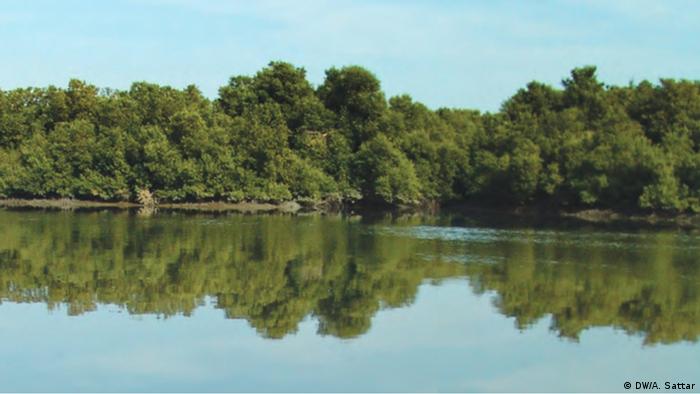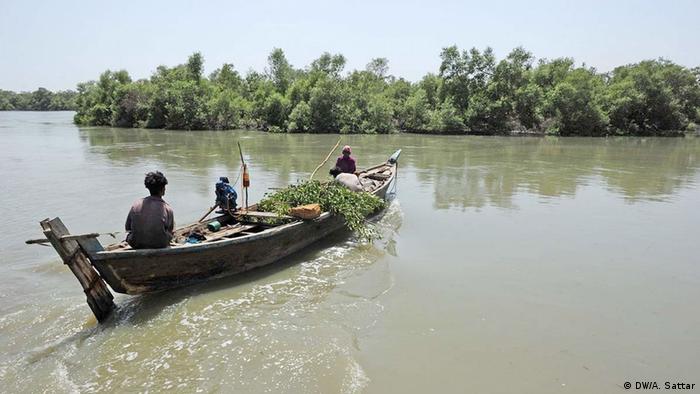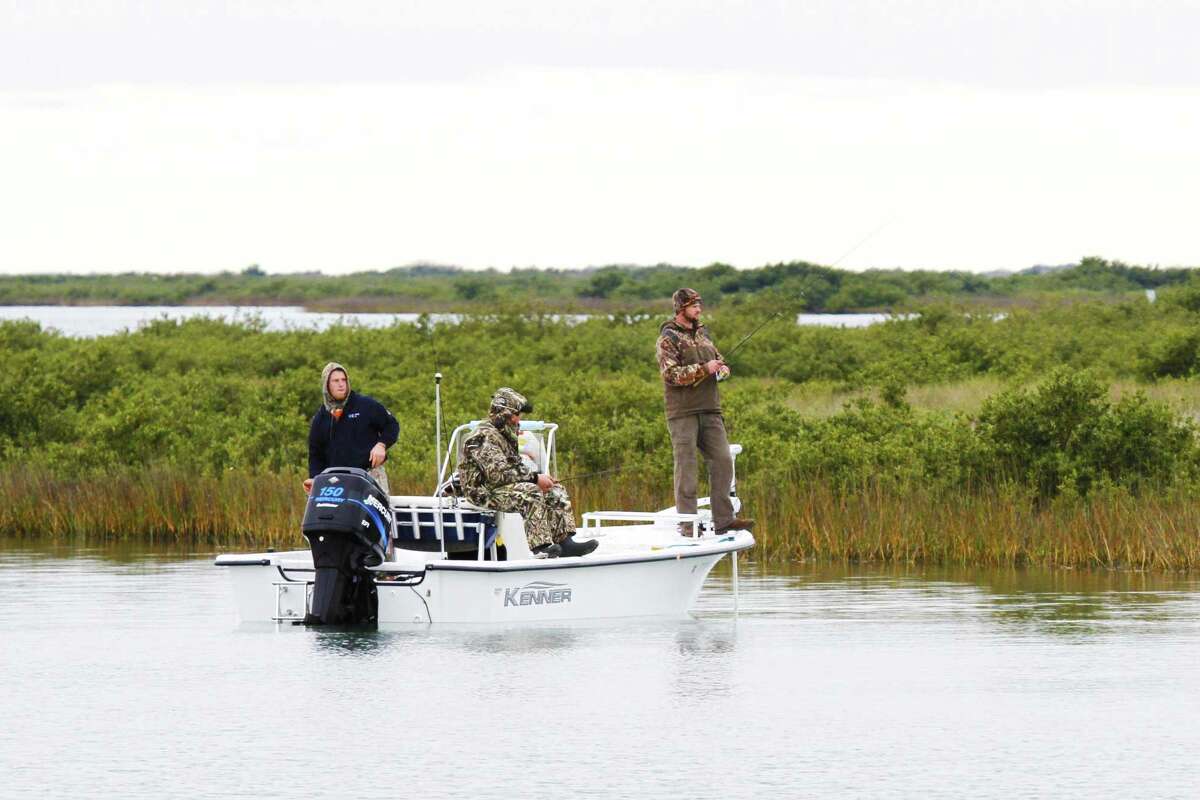During this year-end giving season, we hope you’ll consider a tax-deductible donation to Mangrove Action Project. 
Over the past 26 years the Mangrove Action Project (MAP) has worked around the globe in giving a voice to mangroves, and in helping to conserve and restore these critical forest wetlands. The world today faces a number of challenges – ranging from climate change, to protecting coastlines from strengthening storms, ensuring food security, and economic and social equality. Luckily, mangroves provide unique solutions to these pressing issues! You may have read or heard recently about a report issued by the world’s leading climate scientists at the UN’s International Panel on Climate Change (IPCC), warning us that urgent changes are needed to reverse the course of climate trends. Nearly 2.4 billion people live within 60 miles of the coast, and as temperatures and sea levels continue to rise these areas will be some of the most heavily impacted. Luckily, mangroves have been found to be incredible long-term carbon sinks, storing carbon in the plants themselves, but also (and more importantly) in the soils below for hundreds and sometimes thousands of years. In the coming months, MAP will be pushing our successful ecology and community-based methods to the forefront of mangrove restoration efforts globally, and will continue engaging current and future generations in these crucial ecosystems. But we can only do so thanks to our amazing network of supporters! During this year-end giving season, we hope you’ll consider a tax-deductible donation to Mangrove Action Project. To make a donation,
please visit our donations webpage.
READ MORE AFRICA
Over Half of the World's Tropical Forests Have Been Destroyed

EGYPT – Biodiversity conservationists have revealed that at least 10 more percent of land than what is currently being used to grow green crops will be required to successfully replace fossil fuels with alternatives derived from natural sources such as biofuel. Speaking to government ministers and other high level representatives at the ongoing Biodiversity Conference in Egypt, Anne Larigauderie, executive secretary of the Intergovernmental Platform on Biodiversity and Ecosystem Services (IPBES), said that the increase in the need for land for energy-related uses could undermine natural habitats across the world. Deforestation and forest degradation are one of the biggest threats to forests worldwide and, according to the International Union for Conservation of Nature (IUCN), in the last 60 years, over half of the tropical forests worldwide have been destroyed. Currently, one of the biggest drivers of deforestation is the meat industry with over 2.71 million hectares of tropical forests destroyed to pasture for beef cattle every year. To put it into perspective, this is more than half of tropical deforestation in South America, and more than five times as much as any other commodity in the region. Other significant drivers also include wood products, soybeans, and palm oil. READ MORE
African fishing communities face 'extinction' as blue economy grows

KENYA – Fishing communities along Africa’s coastline are at a greater risk of extinction as countries eye oceans for tourism, industrial fishing and exploration revenue to jumpstart their “blue economies,” U.N. experts and activists said on Monday. The continent’s 38 coastal and island states have in recent years moved to tap ocean resources through commercial fishing, marine tourism and sea-bed mining, according to the United Nations Economic Commission for Africa (UNECA). “There is a great risk and a great danger that those communities will be marginalized,” said Joseph Zelasney, a fishery officer at U.N.’s Food and Agriculture Organization (FAO). “The resources that they depend on will be decimated,” he added at a side event at the Blue Economy Conference organized by Kenya, Canada and Japan in Nairobi. The world’s poorest continent hosts a blue economy estimated at $1 trillion but loses $42 billion a year to illegal fishing and logging of mangroves along the coast, according to UNECA estimates. Seismic waves generated by prospectors to search for minerals, oil and gases along the ocean floor have scared away fish stocks, said Dawda Saine of the Confederation of African Artisanal Fishing in Gambia. READ MORE
ASIA
As tides rise, Indian villagers find a friend in mangroves

INDIA – Pushpo Mandal still remembers the day, nine years ago, when Cyclone Aila struck and the slender creek at the southern edge of her village swelled into a watery monster. Tall tidal waves broke through the earth embankment, rushing into homes and fields, “gulping down everything that came their way”, recalled Mandal from Patharpara village on the coast of India’s West Bengal state. Patharpara, in the Gosaba block of South 24 Parganas district, near the border with Bangladesh, was among the many Sundarbans villages devastated by the ferocious 2009 storm. Yet while the memory still haunts them, villagers have learned lessons from the destruction – planting mangroves to reinforce the embankments that protect their homes and fields from tidal surges. Similar initiatives are also underway in other parts of India’s coastal states, such as Odisha and Tamil Nadu, as well as in Bangladesh, Thailand, Indonesia and Sri Lanka.
READ MORE
Mangrove destruction cases doubled in 2018, but no convictions

INDIA – The city recorded 275 cases of mangrove destruction in 2018, almost double of last year’s 138 and 141 cases in 2016, according to a year-end report by the state mangrove cell. While 271 cases were reported on government land in the city, four were in private forests. Mumbai has 6,600 hectares (ha) of mangrove cover, with 6,400 ha in the suburbs and 200 ha in south Mumbai. Of this, close to 4,500 ha is on government-owned land and remaining in private areas. Fifty-eight people– 35 from the western suburbs, 13 from other parts of the city, and 10 from Navi Mumbai – were arrested for violations of Indian Forest Act, 1927, Environment Protection Act, 1986, coastal regulation zone laws and Wildlife Protection Act, 1972. A total of 44 vehicles were seized, and 1,881 shanties destroyed and cleared from mangrove forests. On September 17, a division bench of justice Abhay Oka and justice Riyaz Chagla of the Bombay high court (HC) had ordered the state to launch criminal action against those who destroy mangroves. However, no convictions were reported this year so far. READ MORE
Pakistan's dams threaten mangroves and livelihoods

PAKISTAN – Big dams and reservoirs in Pakistan are slowly depleting its lush mangroves. The destruction is also affecting local fishermen, who have to look for alternative sources of income. S. Khan reports from Karachi. Fifty-five-year old Mohammad Yaqoob is dejected. The fisherman lives in Pakistan's southern port city of Karachi and has five children. He has just returned from a fishing expedition with a meagre catch, not even enough to recover the money he spent on the boat and diesel. But things were not always like this. Back in the day, Yaqoob's forefathers managed to catch tons of fish, shrimps and prawns. Now, a drop in the number of fish they can catch is forcing many fishermen in Karachi to give up their traditional profession and look for other means of livelihood. This phenomenon is not confined to the largest city of Pakistan; other parts of Sindh province are also facing a drop in the numbers of fish, shrimp and prawns. Dildar Hussain Mallah, a fisherman from Dadu district, has already decided to keep his children away from fishing. There is not enough water in Indus River now, he tells DW, adding that several areas of the province that used to have plenty of water are dry now. READ MORE
Mumbai gets nod to build 10-foot walls to protect mangroves

INDIA – The construction of 10-feet walls along vulnerable and environmentally crucial mangrove forests across the city can now begin after the state mangrove cell received its final clearance. While the Maharashtra Coastal Zone Management Authority (MCZMA) issued clearances earlier this year, the State Environment Impact Assessment Authority (SEIAA) issued its clearance, eliminating the last hurdle before construction. “We cleared the proposal as the Bombay high court (HC) recommended the need for a wall around mangrove areas. Protecting these trees is of utmost importance for a city like Mumbai where flooding concerns have been there since 2005,” said Johny Joseph, chairman, SEIAA. The state mangrove cell said they received the details in a letter earlier this week based on the decision made during the SEIAA meeting last month with a few directions. “Clearances have been issued based on the fact that high-tide water ingress should not be blocked at any cost. We have suggested construction of culverts or under walkways,” said Joseph. The walls have been planned on the landward side across six locations — Sai Dham Nagar in Charkop; near Lagoon Road in Malwani-Malad; along the Eastern Express Highway in Kannamwar Nagar, Vikhroli; Dr Babasaheb Ambedkar Nagar, Colaba; Bhakti Park in Wadala and Shivneri Nagar Mandala, Mankhurd.READ MORE
Kerala coast contains ecologically and socio-economically most vulnerable stretches

INDIA – Home to ‘Venice of the East’, the coastal district of Alappuzha in the south Indian state of Kerala, and forested hills in tourist-magnets Idukki and Wayanad, are “very highly vulnerable” to climate change, says a recently released vulnerability index of the flood-battered state. Bringing both environmental and socio-economic factors into the picture, researchers led by the University of Kerala, assessed the local dimensions of vulnerability in the tropical state of Kerala, using a specifically designed composite vulnerability index. Kerala has a very long coastline of 570 km, out of which close to 60 percent is prone to severe sea erosion, points out the Kerala State Action Plan on Climate Change. “The coastal wetlands, lagoons and mangroves, which are unique fragile coastal ecosystems in Kerala, are under the combined threat of projected sea level rise and saltwater intrusion,” S. Sarun, the lead author of the study, told Mongabay-India. “Hence, those districts that have (their) maximum geographical area under these ecosystems have the highest vulnerability,” said Sarun, of the department of geography, University College, University of Kerala.READ MORE
AMERICAS
Energy watchdog orders halt to work on new refinery after mangroves cleared

MEXICO – Mexico’s energy sector watchdog has ordered that preparatory work on the Tabasco site where a new oil refinery is to be built must stop after mangroves were allegedly cleared without environmental authorization. The Agency for Safety, Energy and the Environment (ASEA) directed the company Sistemas Empresariales del Golfo (SEG) to immediately cease all activities that alter the condition of the site, which is located on the Gulf of Mexico coast at Dos Bocas. The Mexican Center for Environmental Law (Cemda) filed complaints last month when both ASEA and the federal Environmental Protection Agency (Profepa) claimed that neither environmental authorization nor permission to change the land use of the site had been granted before work began. The National Commission for the Knowledge and Use of Biodiversity (Conabio) confirmed the presence of mangroves on the site before the preparatory work took place. READ MORE
Warmer winters trigger changes in Texas bays

USA – A couple of degrees of temperature and a few inches of water might seem hardly worth noticing. But those slight changes are having and stand to have effects — subtle and significant, understood and still uncertain — on the state’s coastal bays and the estuaries, the marine life tied to them and the people who enjoy those resources. Almost 20,000 acres — 31 square miles — of salt marsh, the oyster grass-dominated matrix of wetlands that is the super-charged engine driving inshore coastal fisheries and providing recreation for more than a million anglers and livelihood for tens of thousands, disappeared from estuaries along Texas’ coast between 1990 and 2010. Over the same 20 years, the amount of black mangrove in the shallows rimming the state’s coastal estuaries grew by approximately 4,000 acres, much of that growth in areas along the upper coast, where the tropical shrub had not been previously documented. In many cases, the expansion of the tropical mangroves has come at the expense of the more productive temperate salt marsh.READ MORE
OCEANA
Protecting mangroves in South Pacific

FIJI – Solomoni Naisau grew up not really knowing or fully understanding the importance of our natural ecosystem. He was taught that the natural ecosystem was given to mankind to use to satisfy their basic needs, but he was not fully aware of the importance of the protections of this same natural ecosystem. “As a young boy, I remember when we are told to go and collect firewood, we would just go down and look for mangrove. So we will cut mangrove for our firewood and head back to the village. “We know the importance of mangrove is it provides us with firewood, medicine and also where we can fish,” Mr Naisau. READ MORE



























